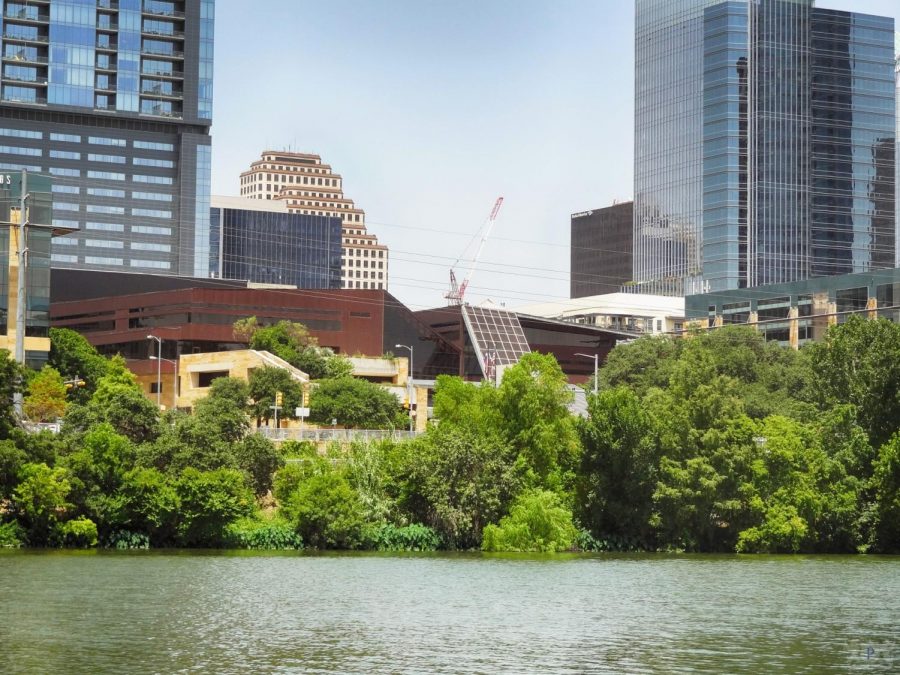City of Austin Begins Redistricting Process
June 12, 2020
For the first time in history, Austin will go through the process of redistricting, in which the ten existing council district boundaries will be redrawn to reflect demographic changes found by the 2020 U.S. census data. The new districts will come into effect in 2022 when city elections are held.
Prior to 2014, officials were appointed by an “at-large” system, where six council members were chosen citywide. In 2014, the approach was modified, because Austin citizens had voted for an administration with more geographic representation. This gave rise to the “10-1” system, where one council member is elected from each of the ten Austin districts.
Westwood is currently located within District 6, represented by Council Member Jimmy Flannigan. District 6 has been one of the fastest-growing districts in Austin in the last several years, which has led to population inequities. The Apple expansion and the developing Robinson Ranch properties have likely contributed to this accelerated increase. Redistricting may result in some neighborhoods on the fringe to be moved to adjacent districts. However, it is unlikely that the Westwood community will be significantly altered.
“Our part of town has experienced some incredibly rapid growth, [which is] usually measured by population growth,” Mr. Flannigan said. “But we are also seeing rapid growth in the number of jobs that are located in this part of town. So we have the problems of success, which is to say that we have a place people want to live, a place where there are jobs, and a traffic problem that is almost unimaginable.”
A long-winded procedure was constructed by Austin to select the commissioners who draw the district boundaries. First, three certified public accountants(CPAs) are randomly chosen by City Auditor Corrie Stokes from a list of applicants. The three CPAs then designate the 60 most qualified people from those who have applied to be commissioners. Eight of those are randomly chosen by the City Auditor to be commissioners. The eight people select an additional six more to serve as the final board of commissioners who create the boundaries. This multistage system ensures that no bias or prejudice affects the boundaries, truly handing over the duty to the citizens of Austin.
“I think it’s important to note that the process we use for redistricting might be the best process for drawing districts in the entire country,” Mr. Flannigan said. “If it’s the state legislature or in Congress, there are huge implications about how lines are drawn, because [they] are drawn by the politicians who then run in those districts. But the hope of this admittedly complicated process is that we put the burden on the process of drawing, not on the outcomes of drawing.”
However, the COVID-19 situation has created some possible problems for redistricting. First, the data collected from the census may likely be released in July of 2021 instead of March, which could potentially set back the entire redistricting timeline.
“The census numbers are going to be the Achilles’ heel of successful redistricting. I feel like we’ve fixed all of the other parts, in terms of the process and who gets to make decisions and all that. But the census will be the Achilles’ heel, as it will be for communities all across the country, as it will be for the legislative redrawing, and as it will be for everything,” Mr. Flannigan said.
Secondly, due to the fact that the bureau cannot perform field operations, there are several Austin residents who will either not complete the census, or complete it inaccurately. Many students at the University of Texas at Austin(UT) who reside in District 9 have returned home due to the crisis, and might not have filled out the census correctly. For example, three former Westwood students who are now undergraduates at UT confirmed that they have used or will be using their parents’ address while completing the census, which would exclude them from the District 9 population. The student population near UT is extremely large, and this could have a considerable impact on redistricting.
“Due to COVID-19, I gave up my campus apartment, and won’t be moving into my new apartment until August. Thus, I’ll fill out [the census] for my current home address,” UT student Kavyaa Choudhary said.
Austin citizens are invited and encouraged to become part of this process that has already begun. Commissioners are chosen based on their analytical skills, their ability to be impartial, and their appreciation for Austin’s diversity. In order to be on the commission, applicants must have been registered to vote for five years without interruption and voted in three of the last five City of Austin general elections. One student who is registered to vote and enrolled in a university or community college will be allowed to serve on the commission. Additionally, the chosen commissioners will be ineligible for certain city positions for a certain amount of time. However, the role undertaken by those who are selected will be one of great value and importance.
“My message for the Westwood community is this: the applications are open for folks who are interested in helping redraw the map, and geographic representation on that committee is crucial. [Although] there is a pretty significant set of requirements, definitely apply. And to the students—pay attention, and watch it, because it’s history,” Mr. Flannigan said.
Specifically how redistricting will unfold for the first time ever remains to be seen. As of now, Austin has designed an unbiased procedure in order to truly reflect our city’s dynamic and diversified community.



